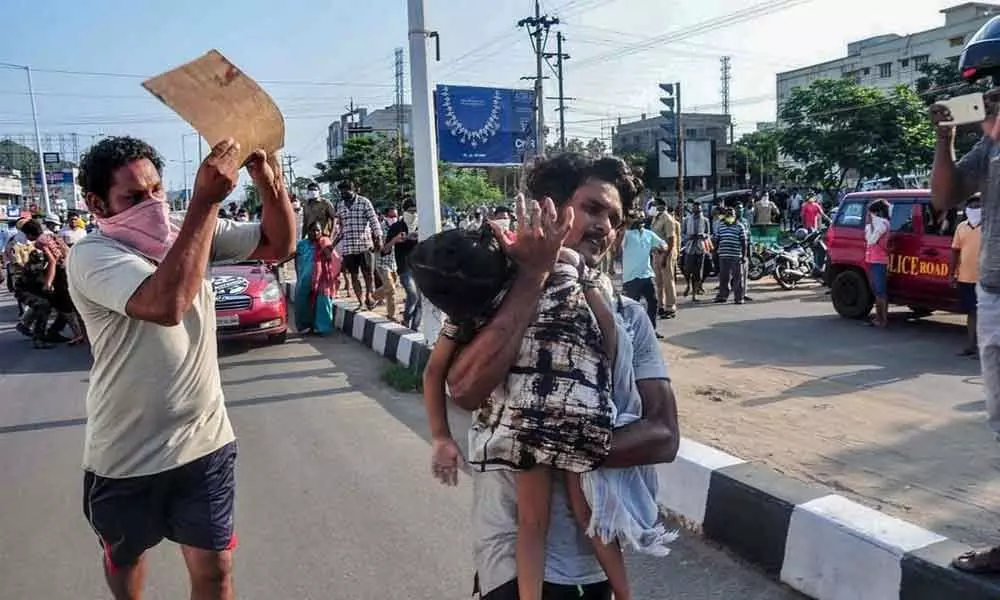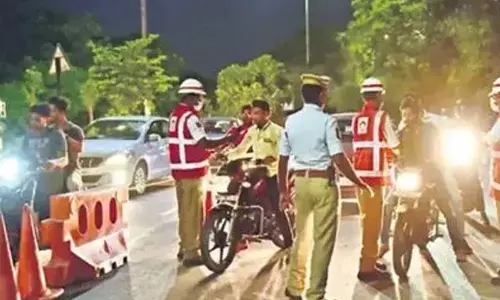Seizure of LG Polymers: Good or bad?

The interim order for the seizure of the LG Polymers Pvt Ltd plant in Visakhapatnam by the division bench of the Andhra Pradesh High Court comprising Chief Justice Jitendra Kumar Maheshwari and Lalitha Kanneganti comes right before the date of the National Green Tribunal (NGT) hearing on June 1, 2020
The interim order for the seizure of the LG Polymers Pvt Ltd plant in Visakhapatnam by the division bench of the Andhra Pradesh High Court comprising Chief Justice Jitendra Kumar Maheshwari and Lalitha Kanneganti comes right before the date of the National Green Tribunal (NGT) hearing on June 1, 2020.
The court order is a result of multiple public interest litigations (PILs) that were filed last week and the illicit activities undertaken by the management at the plant. However, this bench should have given their decision a little more consideration.
The seizure of the plant is acceptable. However, barring the entry of everyone other than the many assessment committees was not wise.
It would be impossible for any assessment team to undertake inspection without the support of factory workers and safety personnel, as only they know the industry's setup inside out and are well-placed to support the assessment committee members.
The bench should have focused on directing the management of LG Polymers to mandatorily ensure that all affected people were immediately provided with medical treatment as well as their long-term access to medical facilities for future check-ups and treatment.
They should also have asked the management to draft a compensation and rehabilitation plan for all affected people and plan about how it aimed to restore the affected area back to its original state.
There has been little mention of the extensive damage done to the local vegetation, including the standing crops of farmers as well as domesticated animals. At least 32 animals including cows, buffaloes and dogs died.
The bench could have directed the industry's senior management to include these aspects in the overall compensation and rehabilitation management plan.
However, a few decisions taken by the court were well thought of. This includes its order to restrict movement of any of the assets, machinery components or contents of LG Polymers Ltd from their current position in the facility without the court's permission.
Another good decision by the court was to order the government to not release the surrendered passports of the company directors and restricting them from leaving the country without seeking prior permission from the court.
Another point of contention is the multiplicity of committees, that can be cause problems in case their findings are not in sync with each other.
The court's permission to allow access to the facility is applicable to the high-powered committees appointed by the Andhra Pradesh government, the NGT and the Union government. Each of them has been tasked with undertaking the assessment of the premises and its setup to probe the incident.
The committee appointed by the High Court had to file its assessment by May 26, 2020. This is very less time for a committee to formulate and undertake assessment and to be able to gauge anything substantial.
It might just happen that they will report on the on-ground observations and share some facts that have already been collected either by other committees or by local agencies working in the area since the day of the incident.
Moreover, the high court hearing scheduled for May 28, 2020 could have been scheduled after the NGT hearing, which would have given the former a little more clarity on the issues at hand and time to understand the findings of other committees, especially the NGT committee.
This way, the high court would have also been able to support the NGT by focusing on the criminal aspects of the case, while the NGT took care of the civil aspect in accordance with its stated jurisdiction.
The High Court bench was not satisfied with the action taken reports submitted by the Central and the State government on May 20, highlighting that the reports were silent on many crucial issues.
The court took time to elaborate on the aspects that are very important. These are to be reported and discussed during its May 28 hearing. These include:
♦ The net worth of LG Polymers according to the Companies Act, 2013, but not according to the book value
♦ The plant being operational without a valid environmental clearance
♦ Whether the plant administrator sought suitable permission to restart during the Covid-19 lockdown
♦ An action-taken report filed by the government in case the operations of the plant were resumed without necessary clearances
♦ Details about lack of checks to ensure proper concentration of 4-tert-Butylcatecol (the inhibitor that was being used in the storage tank)
♦ Reasons for the improper working of the refrigeration system that was supposed to maintain the temperature of the gas below 20 degrees Celsius
♦ The radius of the vulnerable zone, which has revenue villages, educational institutions, hospitals, airport, railway stations, etc and extends up to 6.3 kilometres from the plant
♦ The reasons for the siren / alarm system not functioning to signal the emergency
♦ The reason for the lack of information shared with the locals about the potential risk involved in the storage and handling of styrene gas
♦ Not imparting adequate training to the locals on how to respond in case of emergency situations and on the proper evacuation procedures according to the Manufacture, Storage and Import of Hazardous Chemicals Rules, 1989
♦ The person responsible for sanctioning the unauthorised transportation of styrene monomer from the LG Polymers plant to South Korea without seeking the court's permission, especially when the probe by the appointed investigation team and the magisterial enquiry are being undertaken
If the High Court-appointed committee is able to provide all this information, the case will get more clarity on many aspects that will allow further work to be undertaken more decisively.
But even though the aforementioned facts and issues will be discussed during the next hearing of both the high court and the NGT, there still are other issues.
These include the shortcomings in the first information report, lack of in-depth information and understanding of the things that went wrong, the reasons behind poor record keeping practices of LG Polymers, the exact list of multiple counts of operational and clearance violations and the hollow and defunct on-site and off-site emergency response and disaster management plans of the company.
(The author is Senior Research Associate, Industry and Environment, Centre for Science and Environment, New Delhi. Courtesy: Down To Earth)














